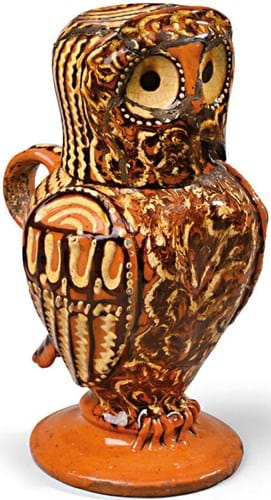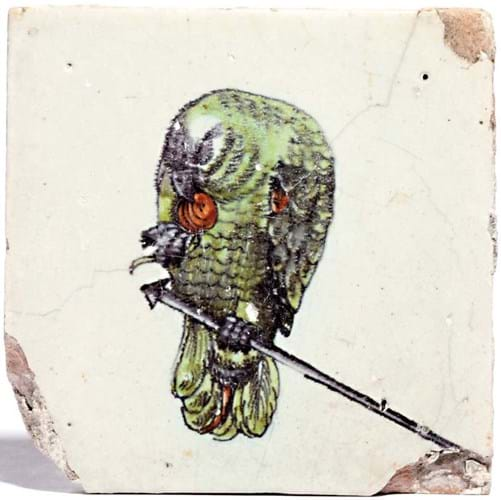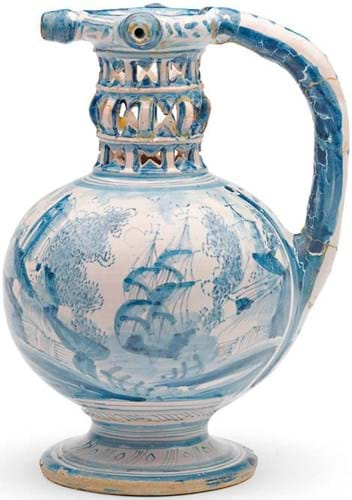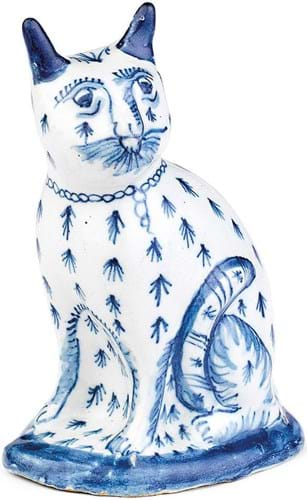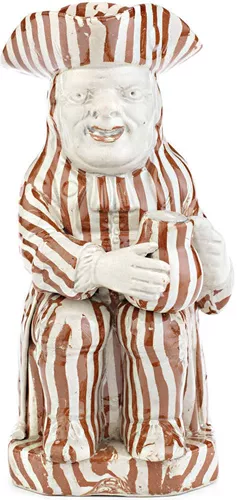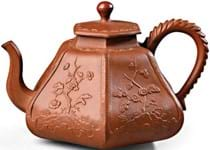Ozzy the Owl – as it is today affectionately known – is one of only a handful of survivors made in Staffordshire in the c.1690s-1710. They seldom come for sale but another of these rare birds was spotted at Woolley & Wallis (25/12% buyer’s premium) in Salisbury on June 16.
It is almost identical to the Potteries Museum’s favourite exhibit, although the cup (forming the head) was in poor condition, having been broken and reglued.
The jug was part of a consignment from the home of the late Peter MacTaggart (1931-2020), an author and furniture restorer from Somerset whose parents had run an antiques business in Hertfordshire into the 1970s.
“The market for English pottery has dipped considerably since the early 1990s and so we had no expectation that it would reach anywhere near the price achieved just over 30 years ago,” said W&W specialist Clare Durham. In fact, guided at £6000-8000, it made a little more, selling to a UK private buyer at £23,000.
“We had several private collectors bidding against the trade and it’s really encouraging to see that buyers are once again recognising quality and rarity in the pottery market and are prepared to pay accordingly.”
From the same collection was a delftware tulip charger, c.1670-80, boldly painted in green, blue, yellow and ochre with a design of tulips and carnations within a blue dash border edged in yellow. Most are around 14in (35cm) across: this was exceptional for its dimensions of 19in (42cm) and in good condition to boot. Estimated at £4000-6000, it hammered at £16,000, selling to the specialist trade.
Multi-estimate bids were also taken from a Dutch buyer for two mid-17th century Delft tiles – so-called ‘bird on a nail’ (spijkertegel) designs made c.1640-60. These are typically associated with the De Swaen tile factory established by Willem Verswaen in Gouda but fewer than 200 are known.
One depicting a long-tailed bird of prey seated on a long manganese nail had suffered some glaze loss (including a patch across the image) but sold for £3200, while another depicting a green parrot eating a nut it holds in its right claw made £6500.
Puzzle jug
Bonhams’ (27.5/25/20/14.5% buyer’s premium) sale on June 23 was headlined by a rare and unrecorded London delftware puzzle jug made at the Pickleherring Quay pottery, Southwark, c.1650. It is decorated in the Dutch taste with a quirky scene of a townscape and ships.
Delftware puzzle jugs of this early date are rare and only a few slightly later examples of this shape survive from the last third of the 17th century.
One of them with the date 1670 flanking the initials HIF and decoration in the Chinese Transitional style was sold by Tennants in Leyburn in March this year for £15,500, despite being broken and reglued. Bonhams’ jug made a similar price, selling at the lower end of a £15,000-20,000 guide.
London delft cats are also known from this early period. However, the example sold here for £13,000 as part of a collection of British ceramic cats (see also the rare Lowestoft porcelain model on page 16) was from the mid-18th century.
Just 4in (10cm) high, it is modelled seated and decorated with ermine-like markings, a chain collar around its neck and its tail curled around its haunches. A similar example was bequeathed by dealer Liane Richards (Mercury Antiques) to the Victoria and Albert Museum in 2016.
The Bonhams sale also included the second tranche of the James and Timmy Challenger collection of Toby jugs which in December last year had yielded the Lord Rodney ‘Midshipman family’ jug sold for a record £65,000.
The most eagerly contested piece this time around was a later pearlware jug, c.1800, extraordinary for its brown and white ‘agate’ costume. The vertical striped stripes (repeated inside the jug but excused from the hands and face) are formed by two colours of clay. Something of a one-off, it was estimated at £5000-8000 but took £13,000.


